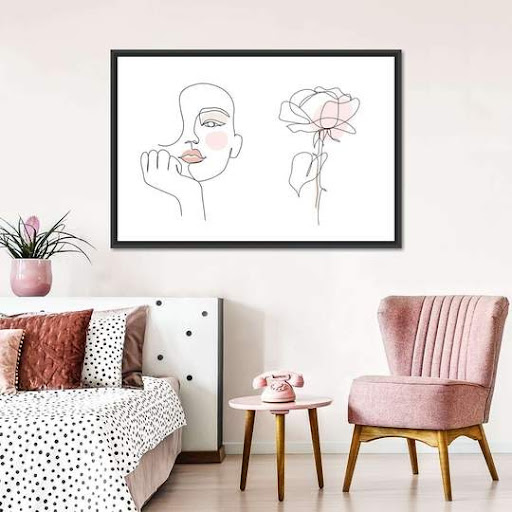Color is a nonverbal communication tool. Each hue has a unique set of properties that cause the occupant of a place, especially a room, to experience different types of function and atmosphere. Color is not static energy, and its meaning may shift from one day to the next based on the energy that an individual is exuding at the time. This explains why many people devote a significant amount of effort to researching the type of color they use in their rooms, as it directly impacts their personality. This is why when bringing color into your room, you must consider many elements:
Choose a Wall Art
A wall art with vibrant colors and a tropical theme may allure your neighbor, but does it do the same to you? Maybe your heart wants a few shades of grey, some dark energy beautifully expressed with intense green plants, or maybe you want to fill up your whole wall with New York themed wall arts, with their city lights, skyscrapers, and wealth; whatever it is, choose what suits your personality. You can always buy ElephantStock wall art from some of the most exquisite collections on earth.
Determine the Room to be Colored
The most important thing is to have the room you’re painting in mind at all times. Brighter hues, such as red and purple, might help to create a pleasant atmosphere in your living area. Cooler colors, such as light blue, light green, lilac, or lavender, may be required in the bedroom. Colors like yellow and green, on the other hand, are ideal for places like the kitchen.
Take into Account the Furniture in your Room
Your wall color should be in sync with the colors of your furniture to maintain overall equilibrium in your spaces. For example, if your carpet is dark brown, you should choose a wall color that complements a brown floor, such as a lighter shade of brown or white, but not something garish like yellow. Furthermore, if all of your bathroom’s fixtures are white, you might not want to go with a bright hue like red or yellow or a subdued color like dark green as a wall color.
Keep an Eye on the Lighting.
When picking a wall color, you should consider natural and artificial lighting into account. There are a few clues regarding wall color options based on your room’s direction and how much sunlight it receives. East and west-facing rooms get less natural light and can benefit from a warmer shade, whereas south-facing rooms get plenty of natural light and look fantastic with cool colors. Because north-facing rooms don’t get much sunlight, you might choose to base your wall colors on your light fixtures.
Colors have different meanings based on culture and circumstance. It significantly impacts the viewer’s mood depending on age, gender, ethnic background, and climate. To this end, color can be defined as a material used to give anything a specific appearance. It is further seen as a product that lends itself to making anything more appealing or engaging. Color is the appearance of things caused by the different qualities of light that they reflect or emit. It is necessary to have light to see color.
Artists and interior designers have long believed that color profoundly influences people’s moods, thoughts, and emotions as it is known to add more value when used on anything. When it comes to interior design, the easiest way to express anything is via color. Each color tone affects our mood, has its significance, and is associated with our mental state. Colors have the power to influence your emotions and thinking. Choose a color for your room that will create a variety of emotions in you, such as pleasant, serene, intimate, cozy, dramatic, and others.






Be First to Comment